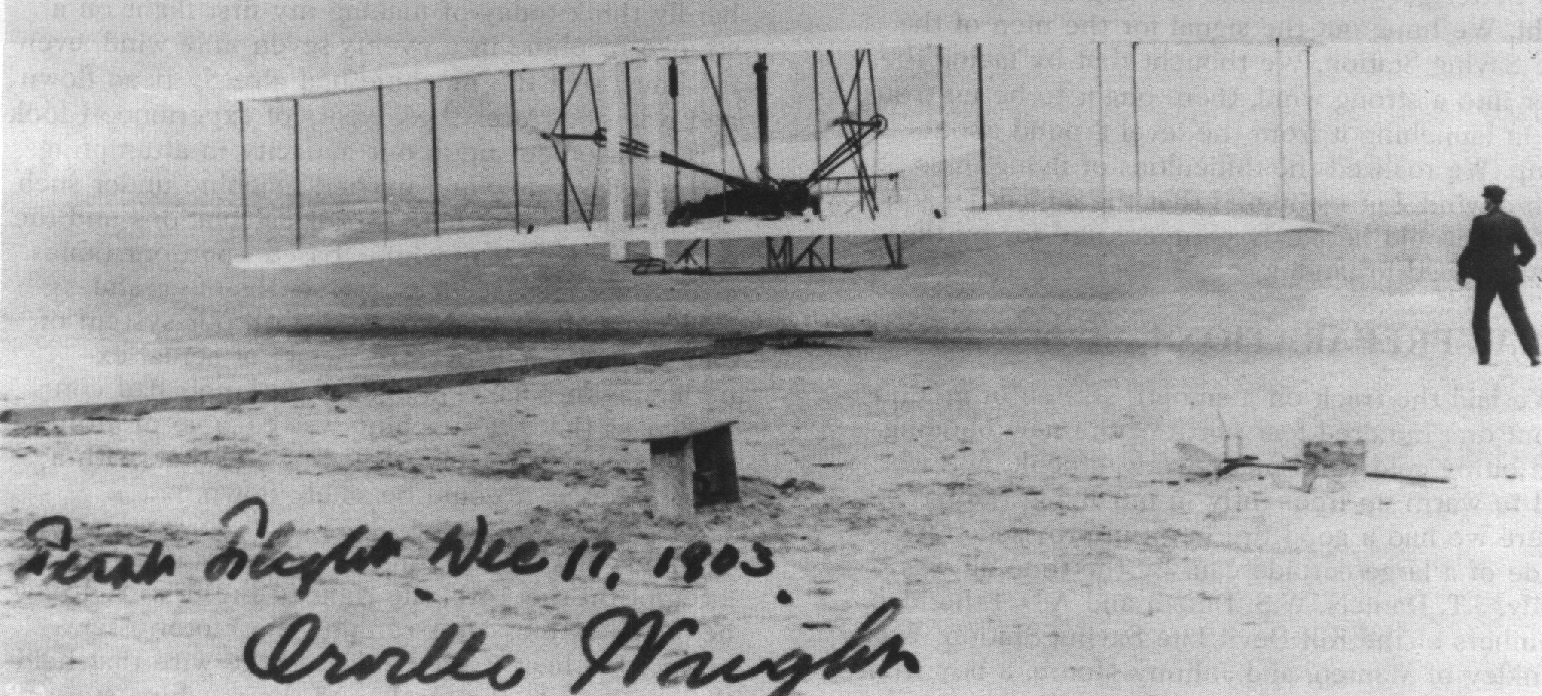AvStop Magazine Online
The course of the flight up and down was exceedingly erratic, partly due to the irregularity of the air, and partly to lack of experience in handling this machine. The control of the front rudder was difficult on account of its being balanced too near the center. This gave it a tendency to turn itself when started; so that it turned too far on one side and then too far on the other.
As a result the ma- chine would rise suddenly to about ten feet, and then as suddenly dart for the ground. A sudden dart when a little over a hundred feet from the end of the track, or a little over 120 feet from the point at which it rose into the air, ended the flight. As the velocity of the wind was over 35 feet per second and the speed of the machine over the ground against this wind ten feet per second, the speed of the machine relative to the air was over 45 feet per second, and the length of the flight was equivalent to a flight of 540 feet made in calm air.

The first manned flight in history: December 17, 1903. At 10:35 am, Orville Wright takes off into a 27 mph wind. The distance covered was 120 feet: time aloft was 12 seconds. Wilbur is seen at right, Picture was taken with Orville's camera by John T. Daniels.